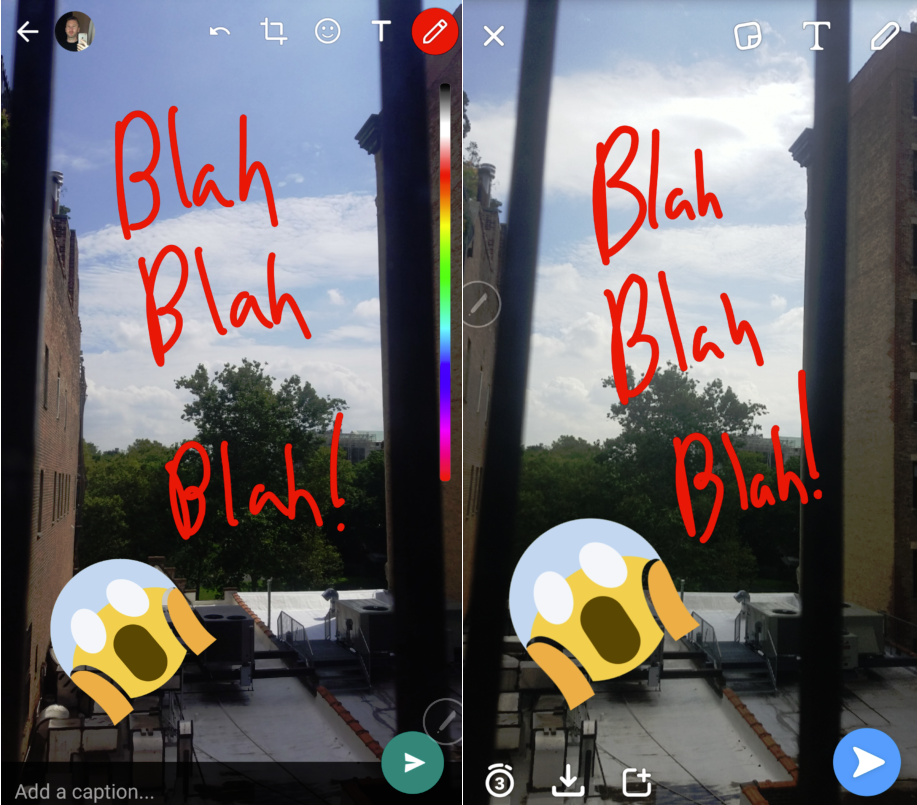Last month, Instagram sparked controversy by releasing “Stories”, a feature which is a pretty much direct copy of Snapchat’s Stories function, which Snapchat released back in the second half of 2013. And since its launch, Instagram Stories has taken off, with more than 100 million people now using the function every day. That’s encroaching on Snapchat’s own usage numbers – Snapchat has 150 million daily active users, with more than a third of those creating their own Stories content. Clearly, despite it being a direct clone of Snapchat, Instagram users are not overly phased by such details.
So, given the success of Instagram Stories, Facebook’s moving on with its next effort to curb Snapchat use, this time using their messaging app WhatsApp (which Facebook acquired in October 2014) to strike another blow to the yellow ghost. And with more than a billion active users, WhatsApp has the power to draw alot of attention, even if the functionality isn’t exactly on par with what people can do within Snapchat (yet).
Over on Android Police, they’ve noted that the latest beta version of WhatsApp includes new features which enable users to draw on an image, add text to it, and/or paste stickers.
That layout looks familiar, right? As noted by The Next Web, the new functionality looks exactly like Snapchat – they even produced the same image in both apps to highlight the similarity.

Heightening the similarity, WhatsApp is also using the same emoji characters as Snapchat – again, as per The Next Web:
“Even most of the emoji they use are identical. Which makes no sense at all, because WhatsApp normally forces you to use iOS style emoji even on Android. Instead it’s using the open source Twemoji used by Twitter and Snapchat.”
And more – WhatsApp is also introducing a front-facing flash (the screen will light up white when taking a selfie, acting as a makeshift flash to better illuminate your face in dark environments) and one-finger zoom – which is already available in both Instagram and Snapchat.
Of course, this is only one element of the Snapchat experience – WhatsApp aren’t introducing a time limit on content or a “Stories” type system. But at the same time, WhatsApp’s designed to be fast and simple in order for people to use the app in more places, particularly areas of low connectivity. As such, WhatsApp’s not especially suited to hosting all of those high-end features, but as with Instagram Stories, maybe, by adding some of these Snapchat-type tools, Facebook will be able to stop users from switching across to see what Snapchat has to offer.
I mean, if you can already do all the things you can do in Snapchat within the apps you already know – where you already have all your contacts and connections – why would you go anywhere else?
It’s another small blow in Facebook’s efforts to nullify Snapchat, but one worthy of note, either way.
SocialMediaToday.com
Now WhatsApp is Copying Snapchat Too
ADVERTISEMENT







